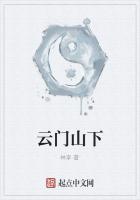The art of compiling false or forged memoirs of that period was widely practiced; but the memoirs of Madame du Hausset, who speaks of Saint-Germain, are authentic. She was the widow of a poor man of noble family, and was one of two femmes de chambre of Madame de Pompadour. Her manuscript was written, she explains, by aid of a brief diary which she kept during her term of service. One day M.
Senac de Meilhan found Madame de Pompadour's brother, M. de Marigny, about to burn a packet of papers. "It is the journal," he said, "of a femme de chambre of my sister, a good, kind woman." De Meilhan asked for the manuscript, which he later gave to Mr. Crawford, one of the Kilwinning family, in Ayrshire, who later helped in the escape of Louis XVI. and Marie Antoinette to Varennes, where they were captured. With the journal of Madame du Hausset were several letters to Marigny on points of historical anecdote.[1]
[1] One of these gives Madame de Vieux-Maison as the author of a roman a clef, Secret Memoirs of the Court of Persia, which contains an early reference to the Man in the Iron Mask (died 1703). The letter-writer avers that D'Argenson, the famous minister of Louis XV., said that the Man in the Iron Mask was really a person fort peu de chose, 'of very little account,' and that the Regent d'Orleans was of the same opinion. This corroborates my theory, that the Mask was merely the valet of a Huguenot conspirator, Roux de Marsilly, captured in England, and imprisoned because he was supposed to know some terrible secret--which he knew nothing about.
See The Valet's Tragedy, Longmans, 1903.
Crawford published the manuscript of Madame du Hausset, which he was given by de Meilhan, and the memoirs are thus from an authentic source. The author says that Louis XV. was always kind to her, but spoke little to her, whereas Madame de Pompadour remarked, "The King and I trust you so much that we treat you like a cat or a dog, and talk freely before you."
As to Saint-Germain, Madame du Hausset writes: "A man who was as amazing as a witch came often to see Madame de Pompadour. This was the Comte de Saint-Germain, who wished to make people believe that he had lived for several centuries. One day Madame said to him, while at her toilet, "What sort of man was Francis I., a king whom I could have loved?" "A good sort of fellow," said Saint-Germain;
"too fiery--I could have given him a useful piece of advice, but he would not have listened." He then described, in very general terms, the beauty of Mary Stuart and La Reine Margot. "You seem to have seen them all," said Madame de Pompadour, laughing.
"Sometimes," said Saint-Germain, "I amuse myself, not by ****** people believe, but by letting them believe, that I have lived from time immemorial." "But you do not tell us your age, and you give yourself out as very old. Madame de Gergy, who was wife of the French ambassador at Venice fifty years ago, I think, says that she knew you there, and that you are not changed in the least." "It is true, Madame, that I knew Madame de Gergy long ago." "But according to her story you must now be over a century old." "It may be so, but I admit that even more possibly the respected lady is in her dotage."
At this time Saint-Germain, says Madame du Hausset, looked about fifty, was neither thin nor stout, seemed clever, and dressed simply, as a rule, but in good taste. Say that the date was 1760, Saint-Germain looked fifty; but he had looked the same age, according to Madame de Gergy, at Venice, fifty years earlier, in 1710. We see how pleasantly he left Madame de Pompadour in doubt on that point.
He pretended to have the secret of removing flaws from diamonds.
The King showed him a stone valued at 6,000 francs--without a flaw it would have been worth 10,000. Saint-Germain said that he could remove the flaw in a month, and in a month he brought back the diamond--flawless. The King sent it, without any comment, to his jeweler, who gave 9,600 francs for the stone, but the King returned the money, and kept the gem as a curiosity. Probably it was not the original stone, but another cut in the same fashion, Saint-
Germain sacrificing 3,000 or 4,000 francs to his practical joke.
He also said that he could increase the size of pearls, which he could have proved very easily--in the same manner. He would not oblige Madame de Pompadour by giving the King an elixir of life: "I should be mad if I gave the King a drug." There seems to be a reference to this desire of Madame de Pompadour in an unlikely place, a letter of Pickle the Spy to Mr. Vaughan (1754)! This conversation Madame du Hausset wrote down on the day of its occurrence.
Both Louis XV. and Madame de Pompadour treated Saint-Germain as a person of consequence. "He is a quack, for he says he has an elixir," said Dr. Quesnay, with medical skepticism. "Moreover, our master, the King, is obstinate; he sometimes speaks of Saint-
Germain as a person of illustrious birth."
The age was skeptical, unscientific, and, by reaction, credulous.
The philosophes, Hume, Voltaire, and others, were exposing, like an ingenious American gentleman, "the mistakes of Moses." The Earl of Marischal told Hume that life had been chemically produced in a laboratory, so what becomes of Creation? Prince Charles, hidden in a convent, was being tutored by Mlle. Luci in the sensational philosophy of Locke, "nothing in the intellect which does not come through the senses"--a queer theme for a man of the sword to study.















